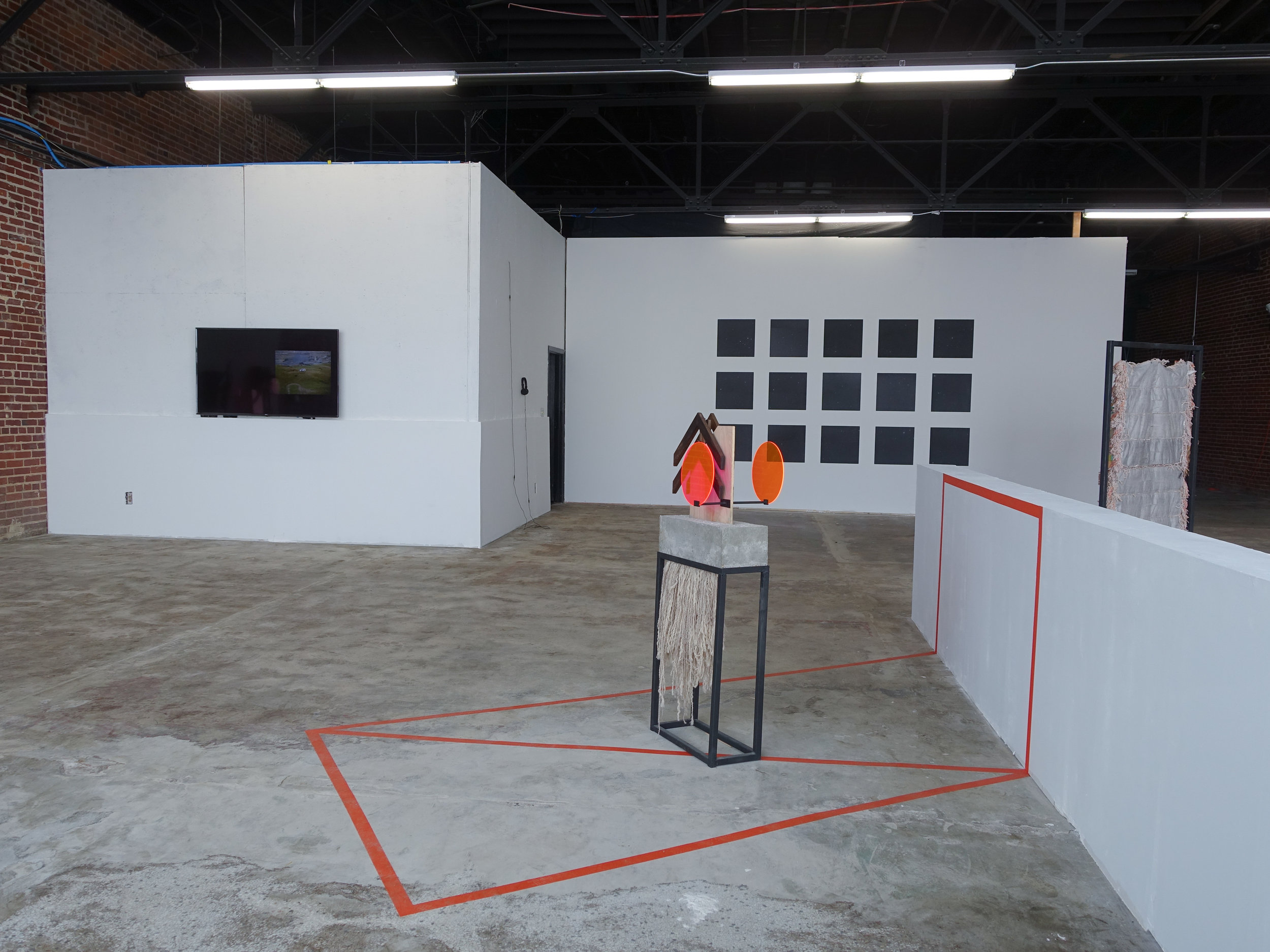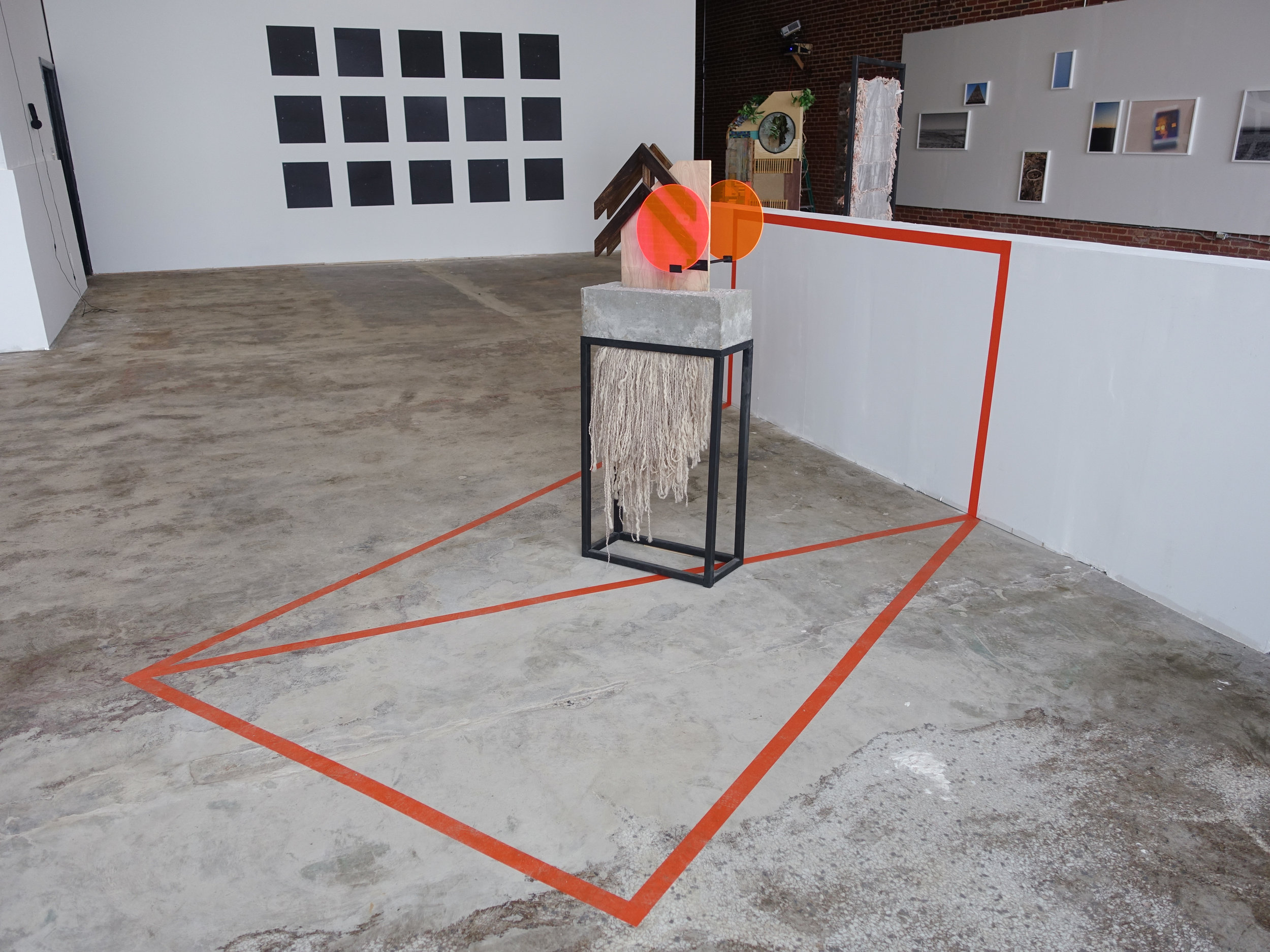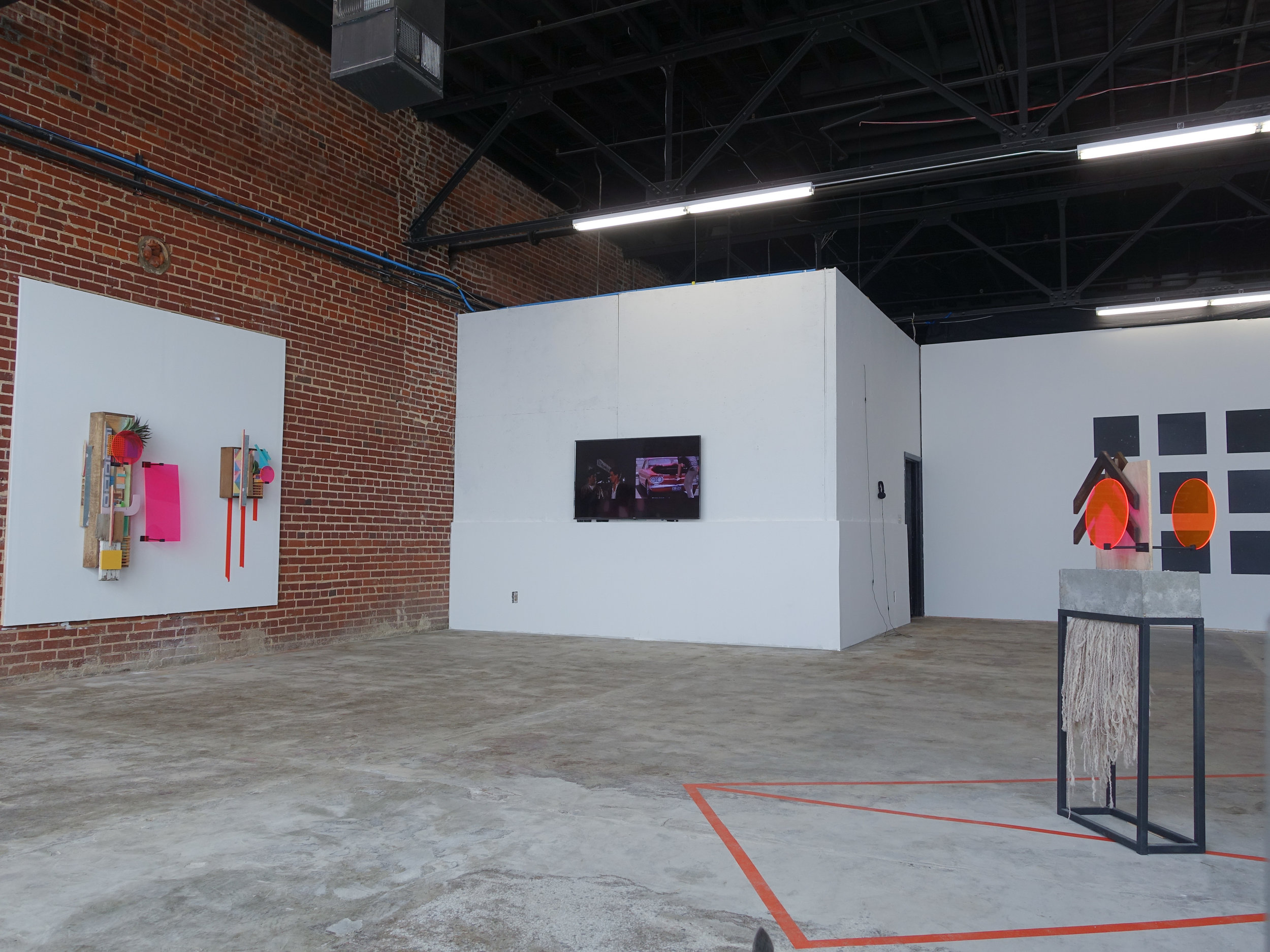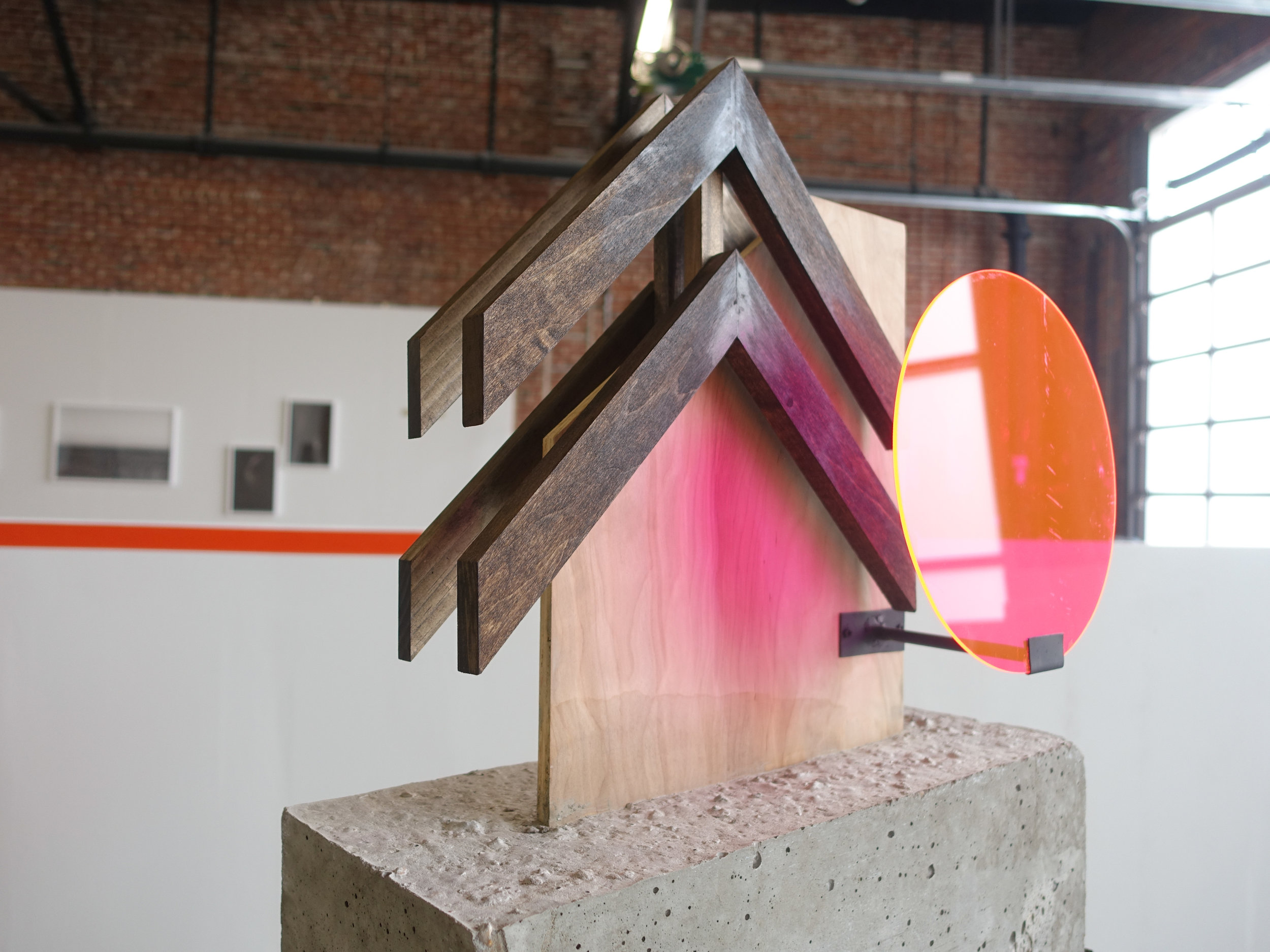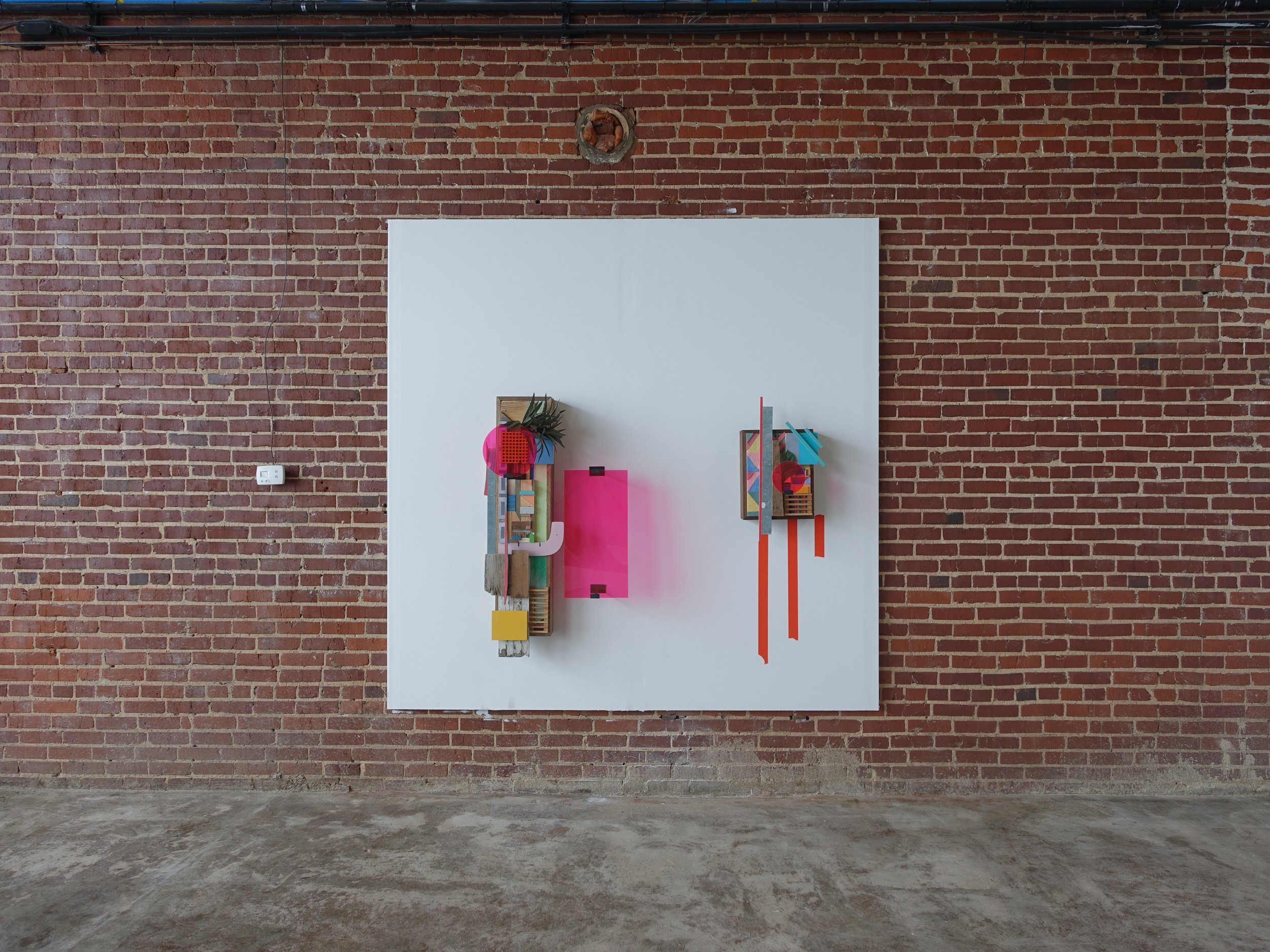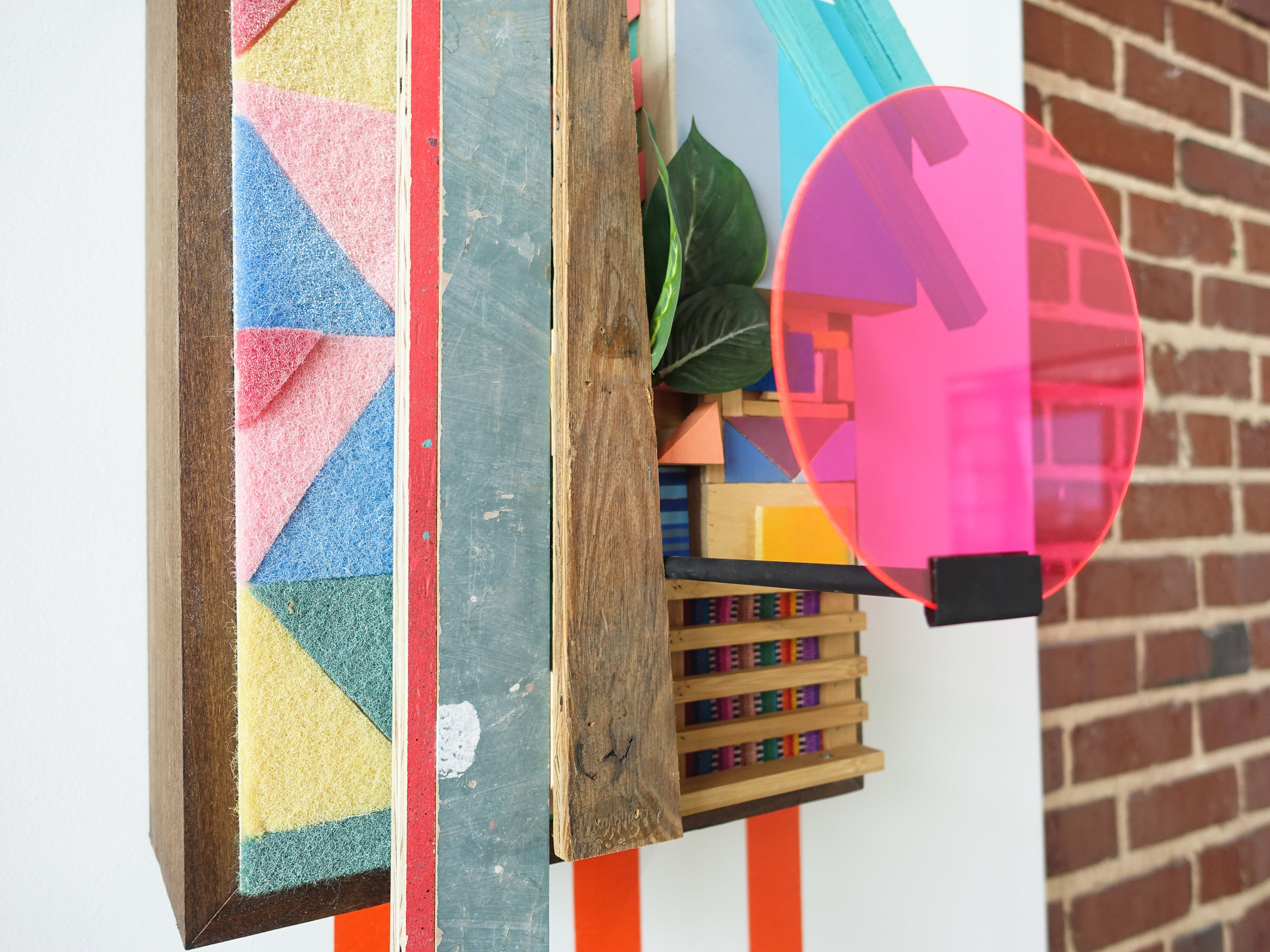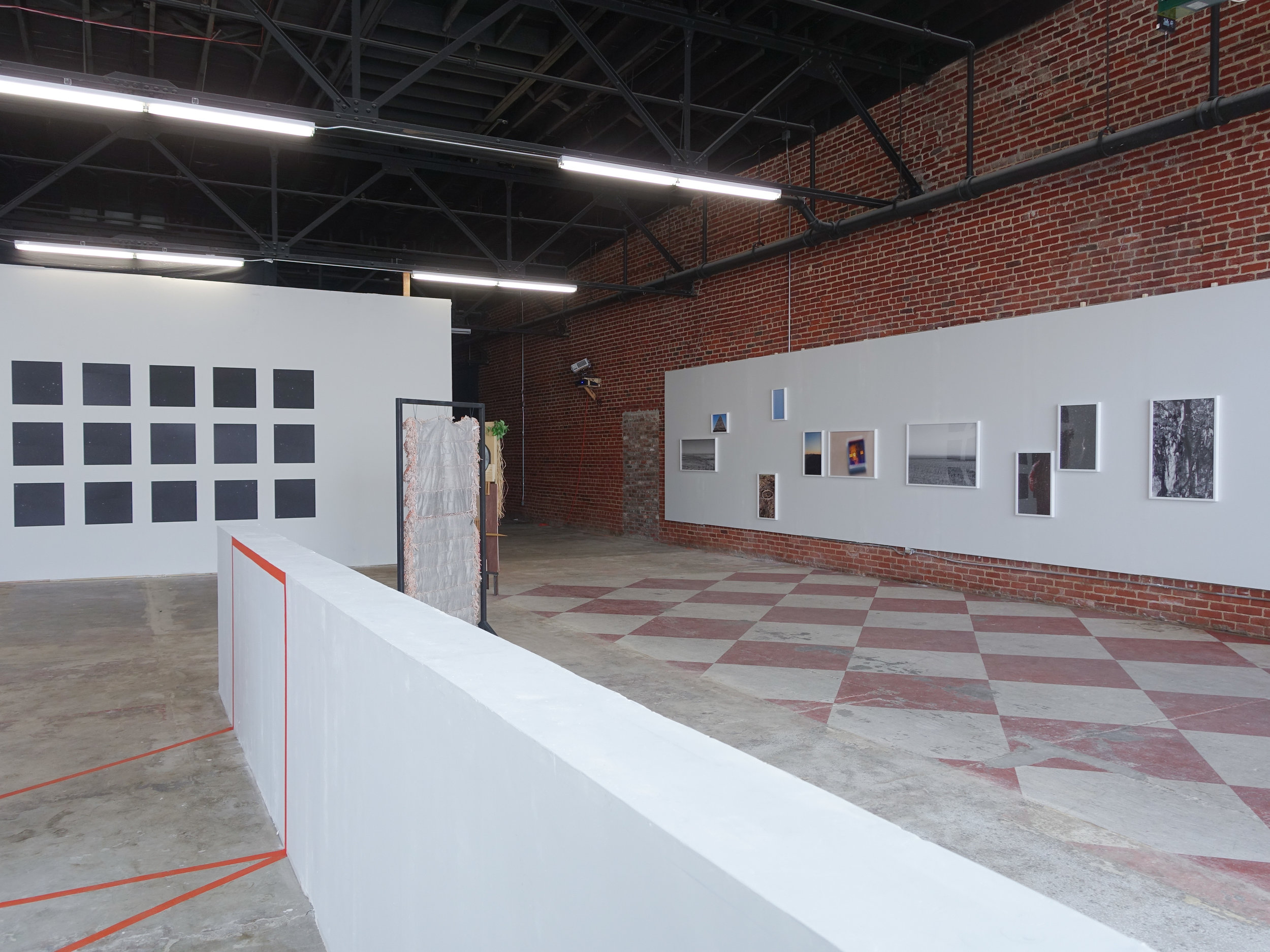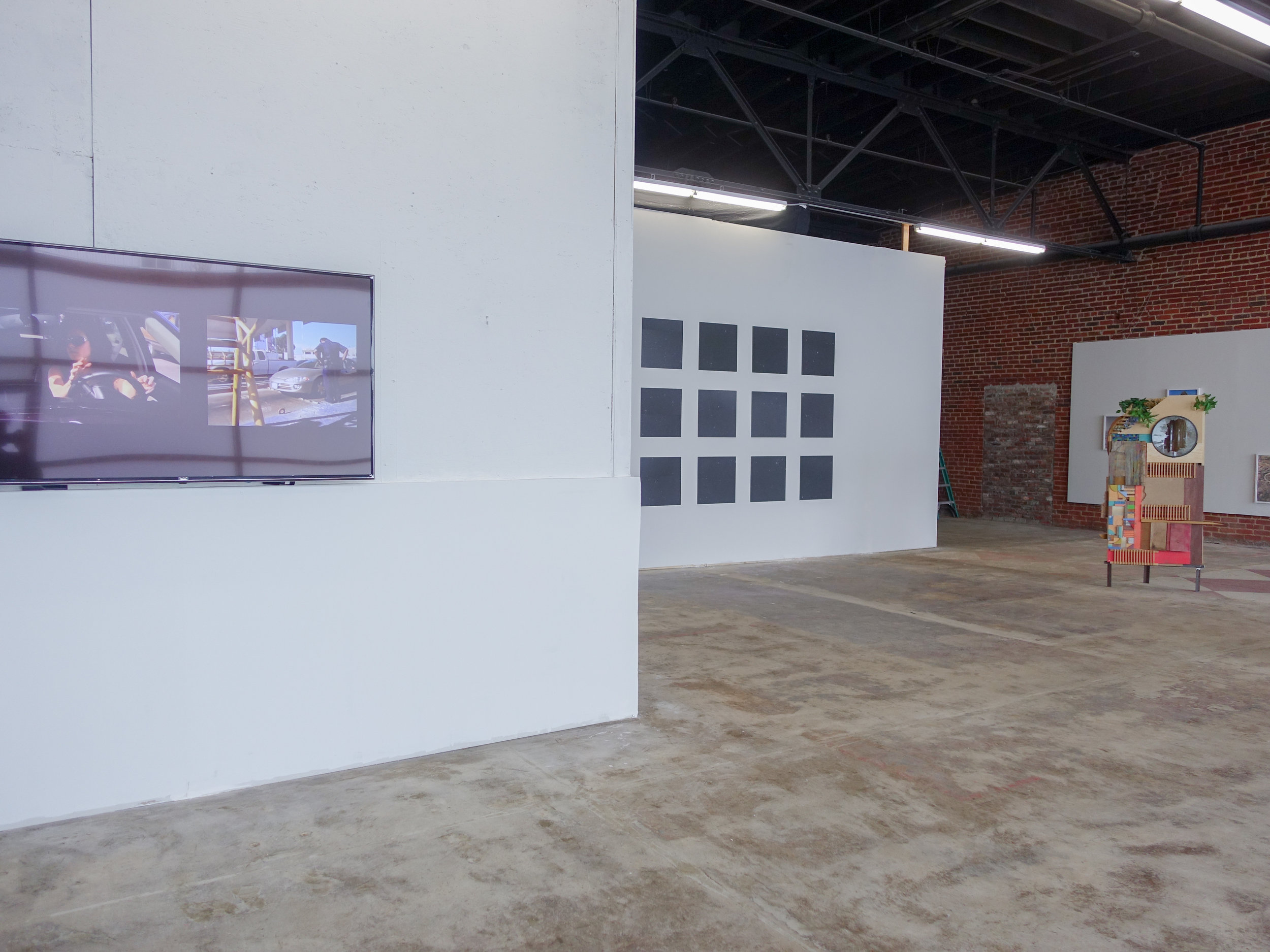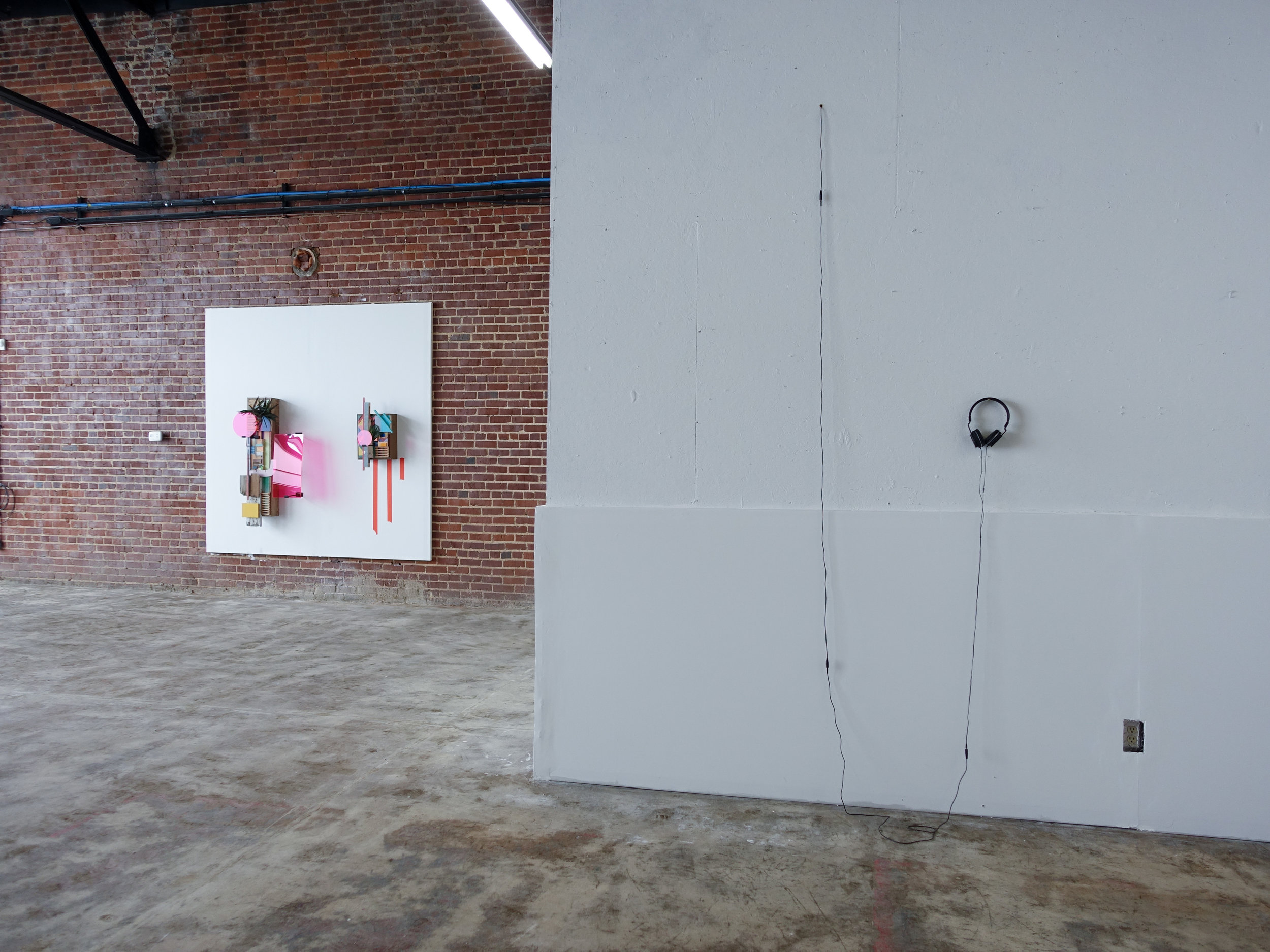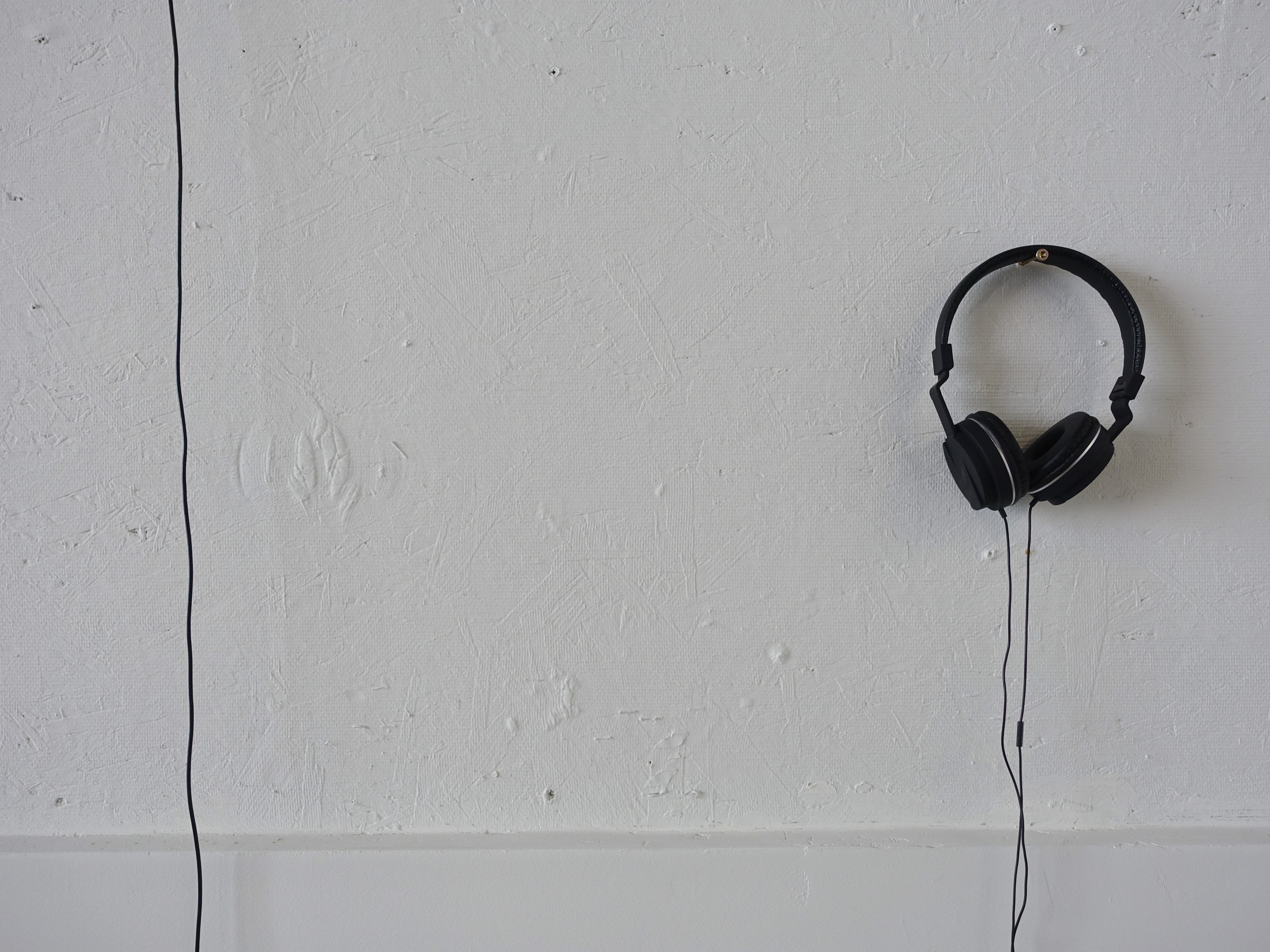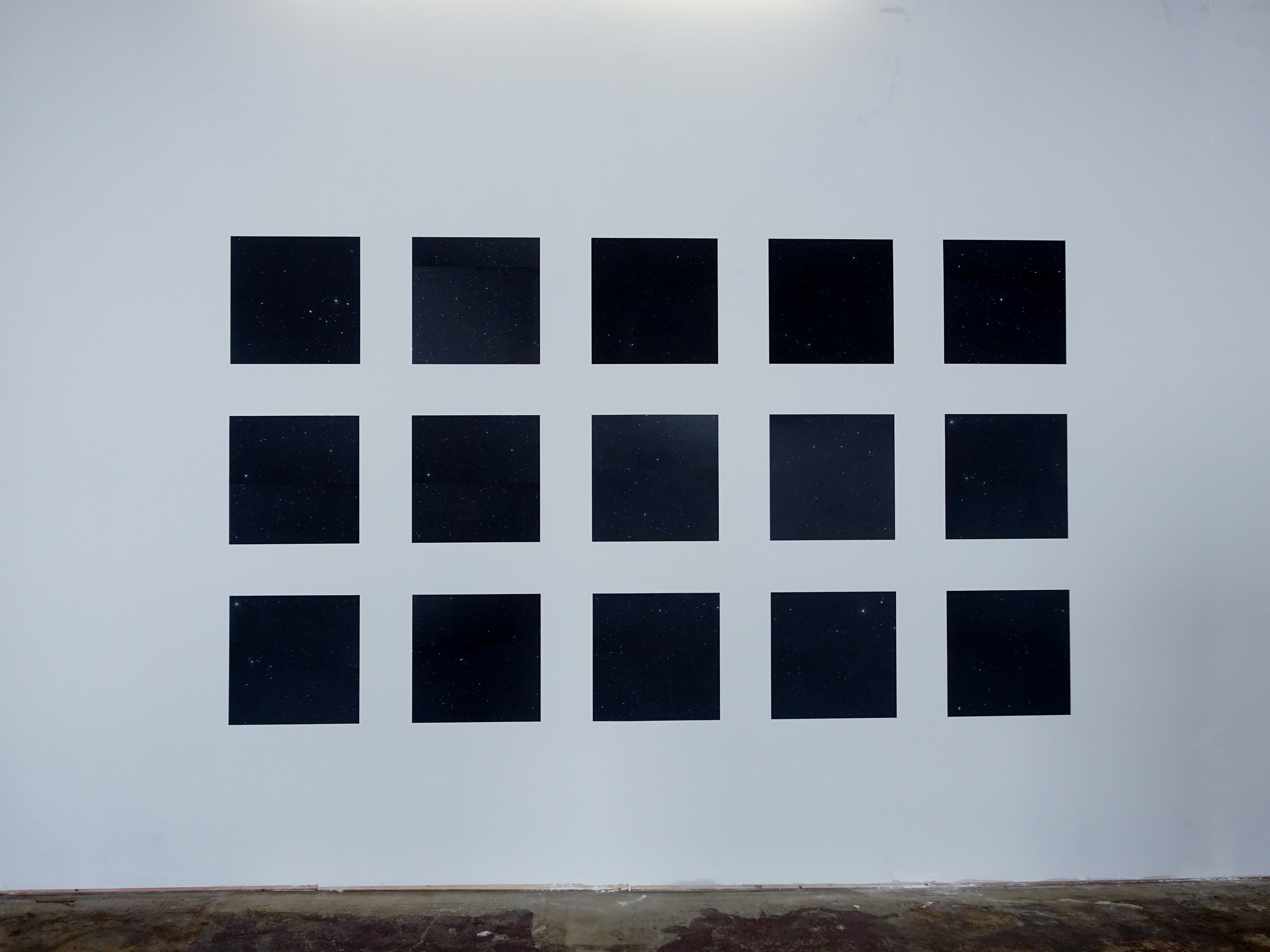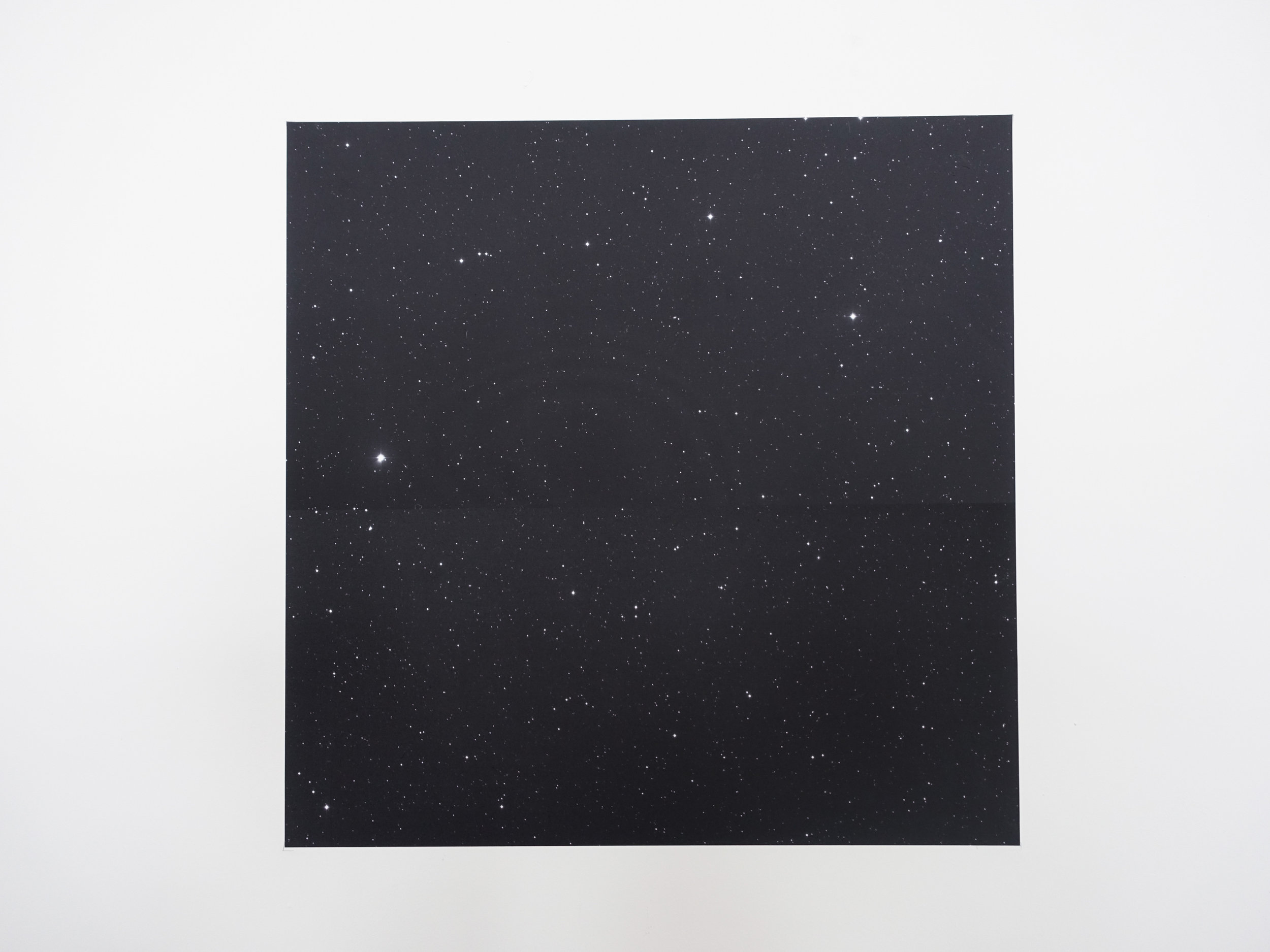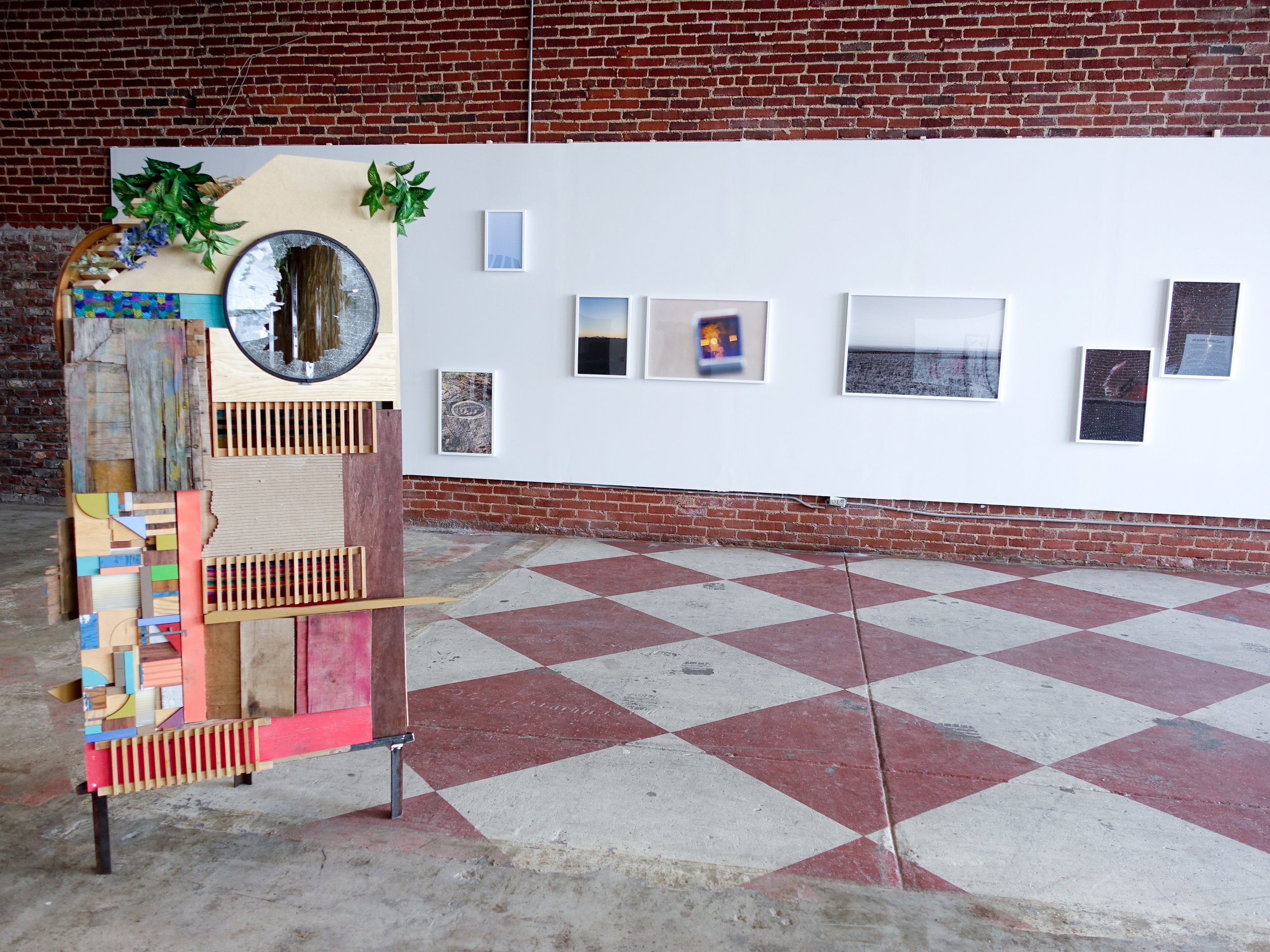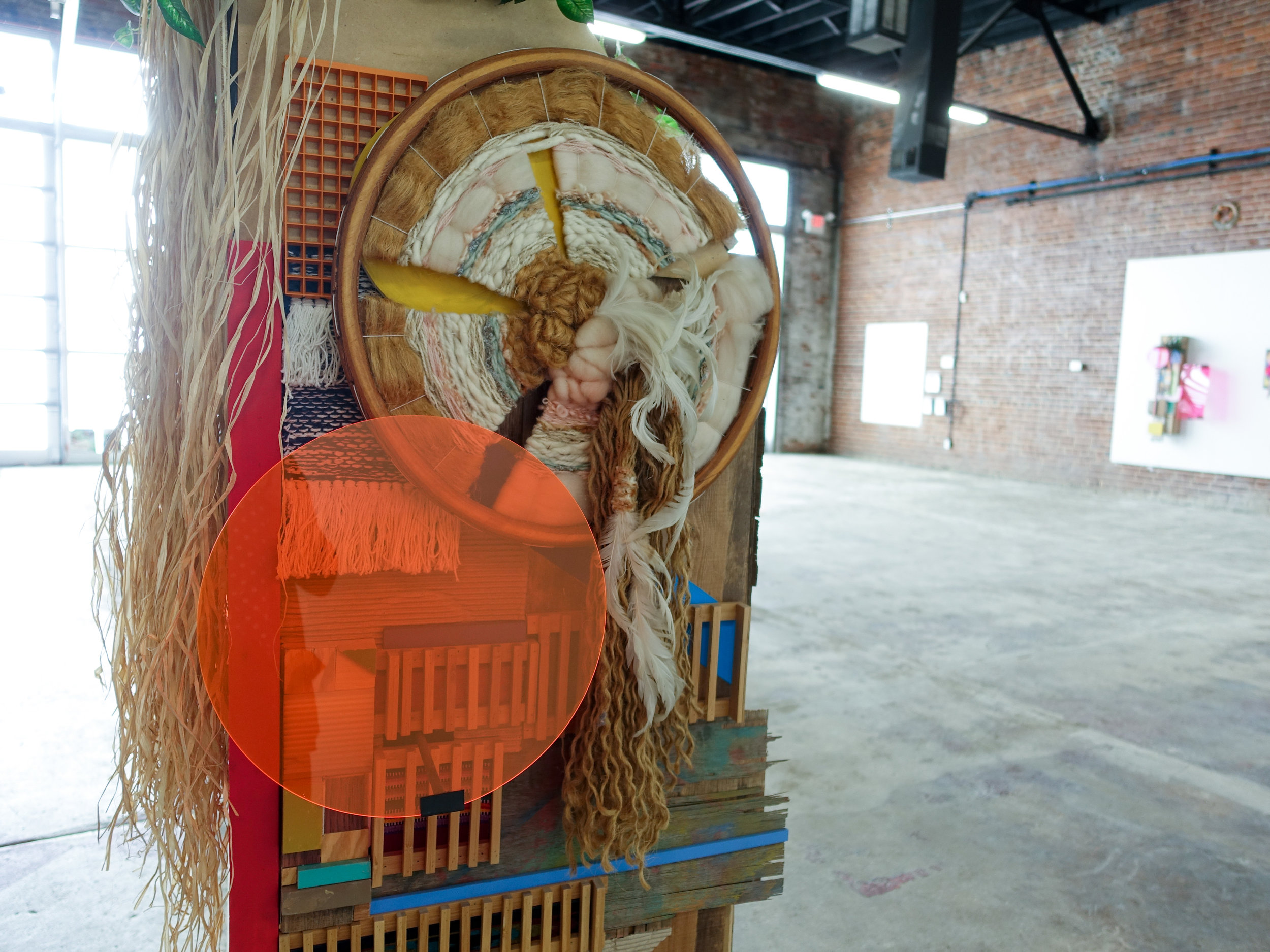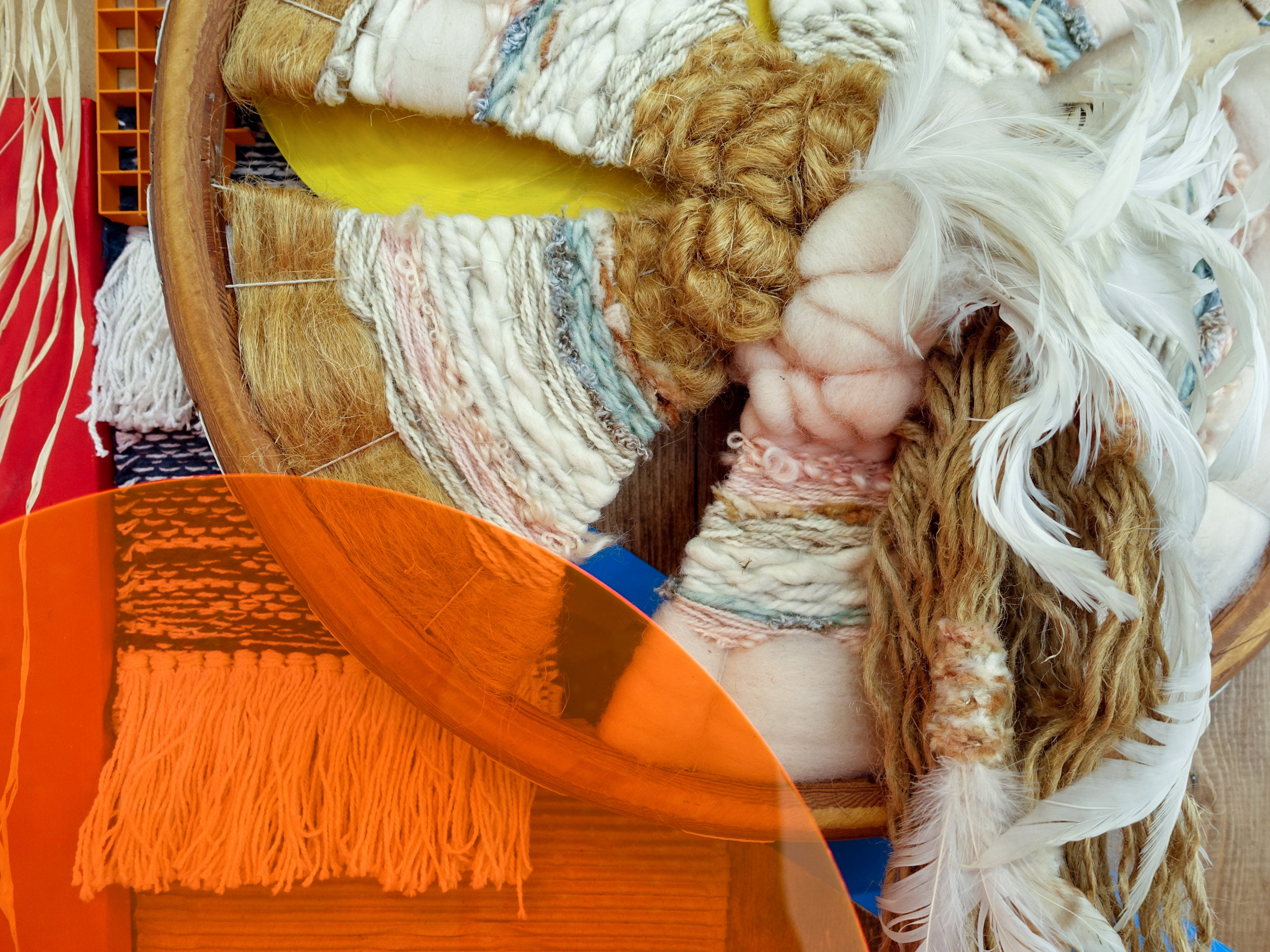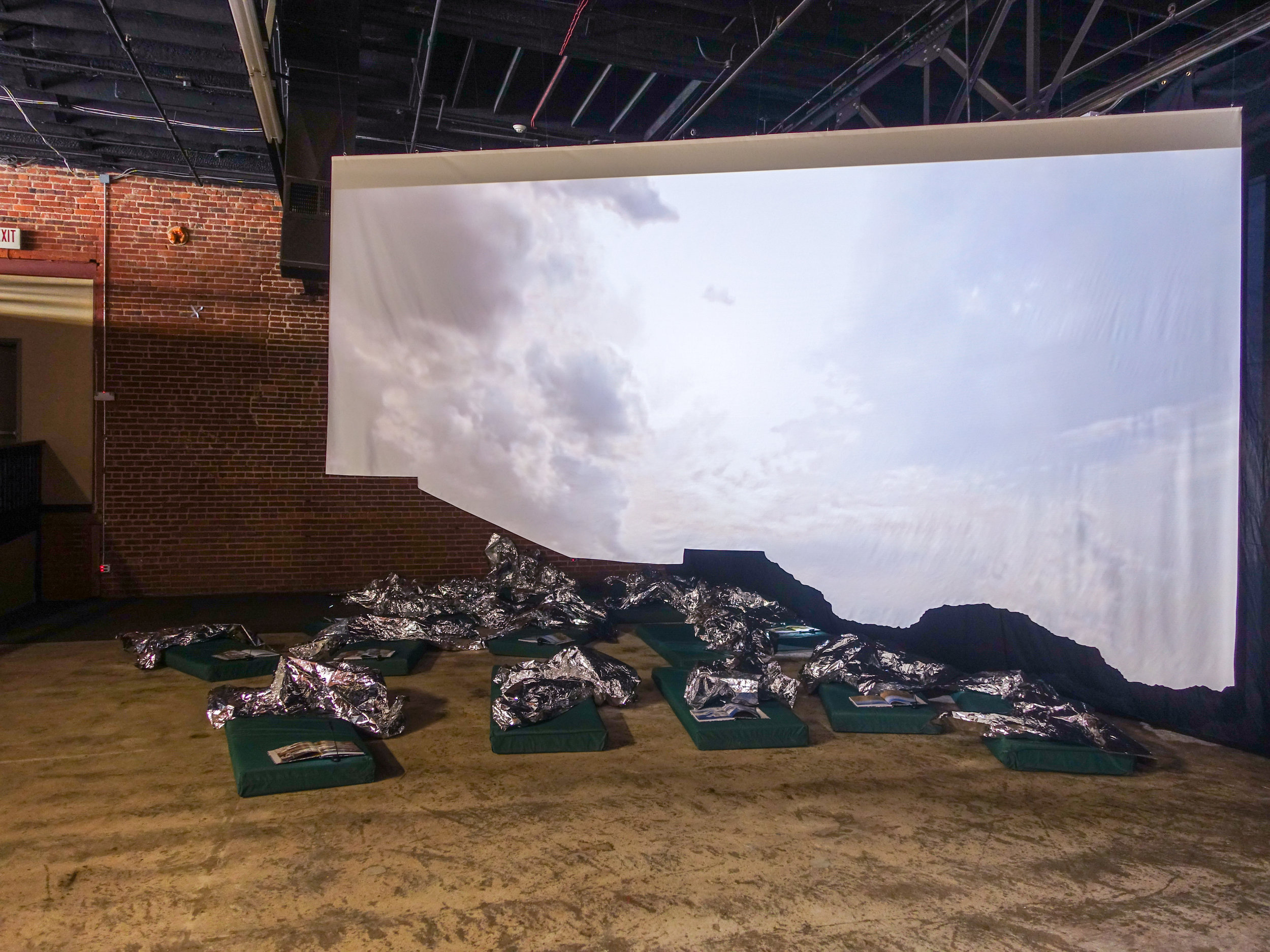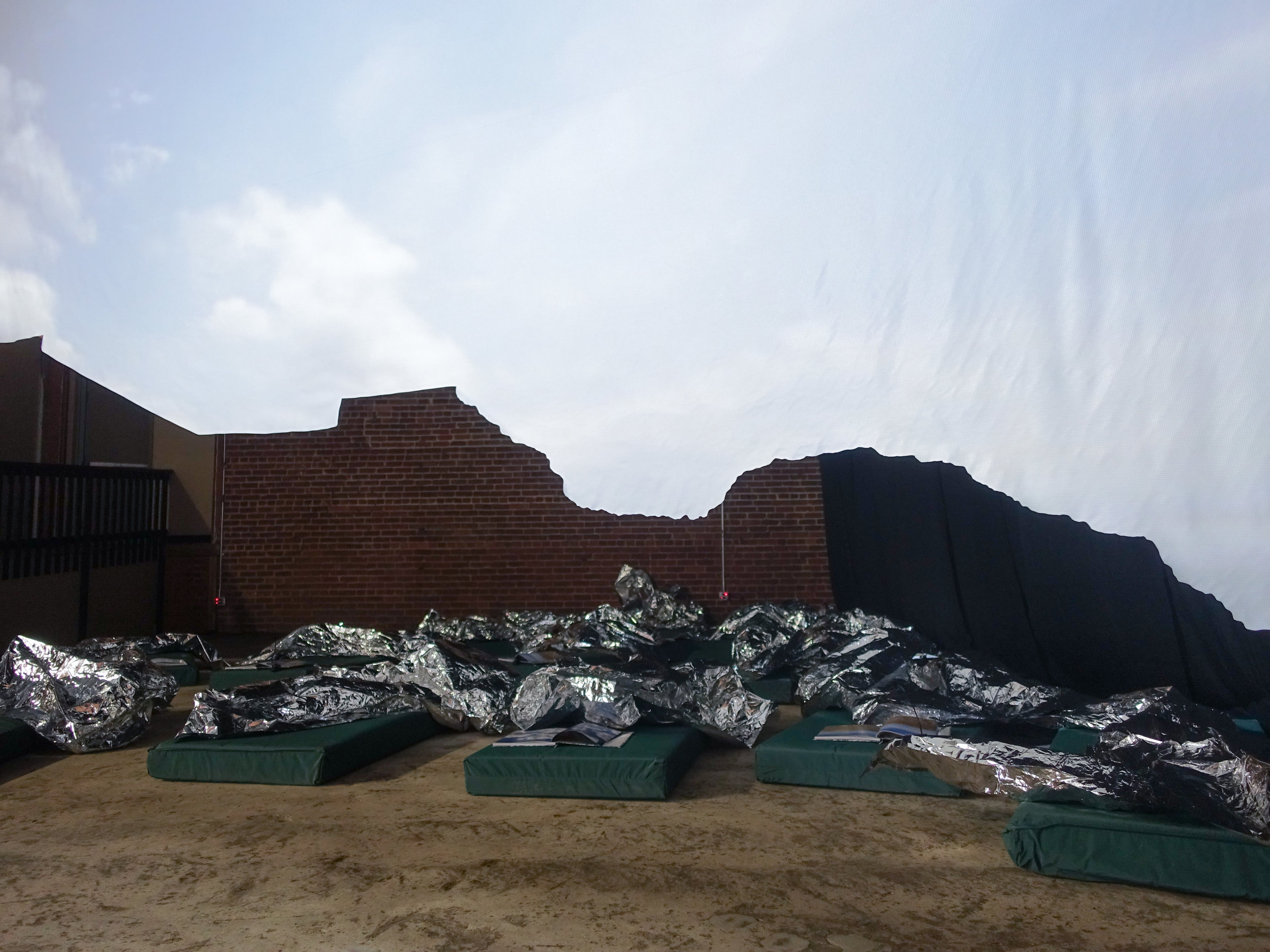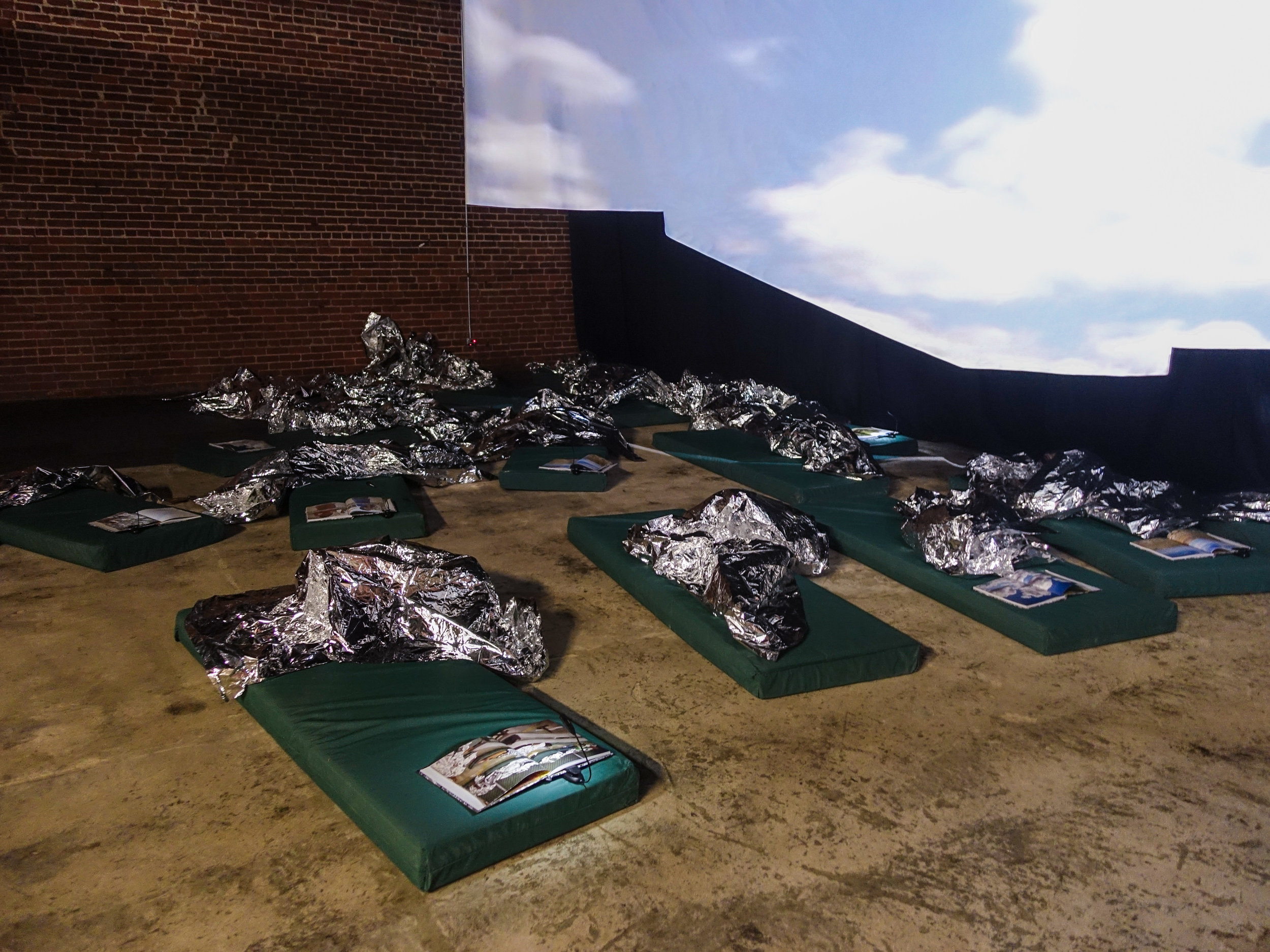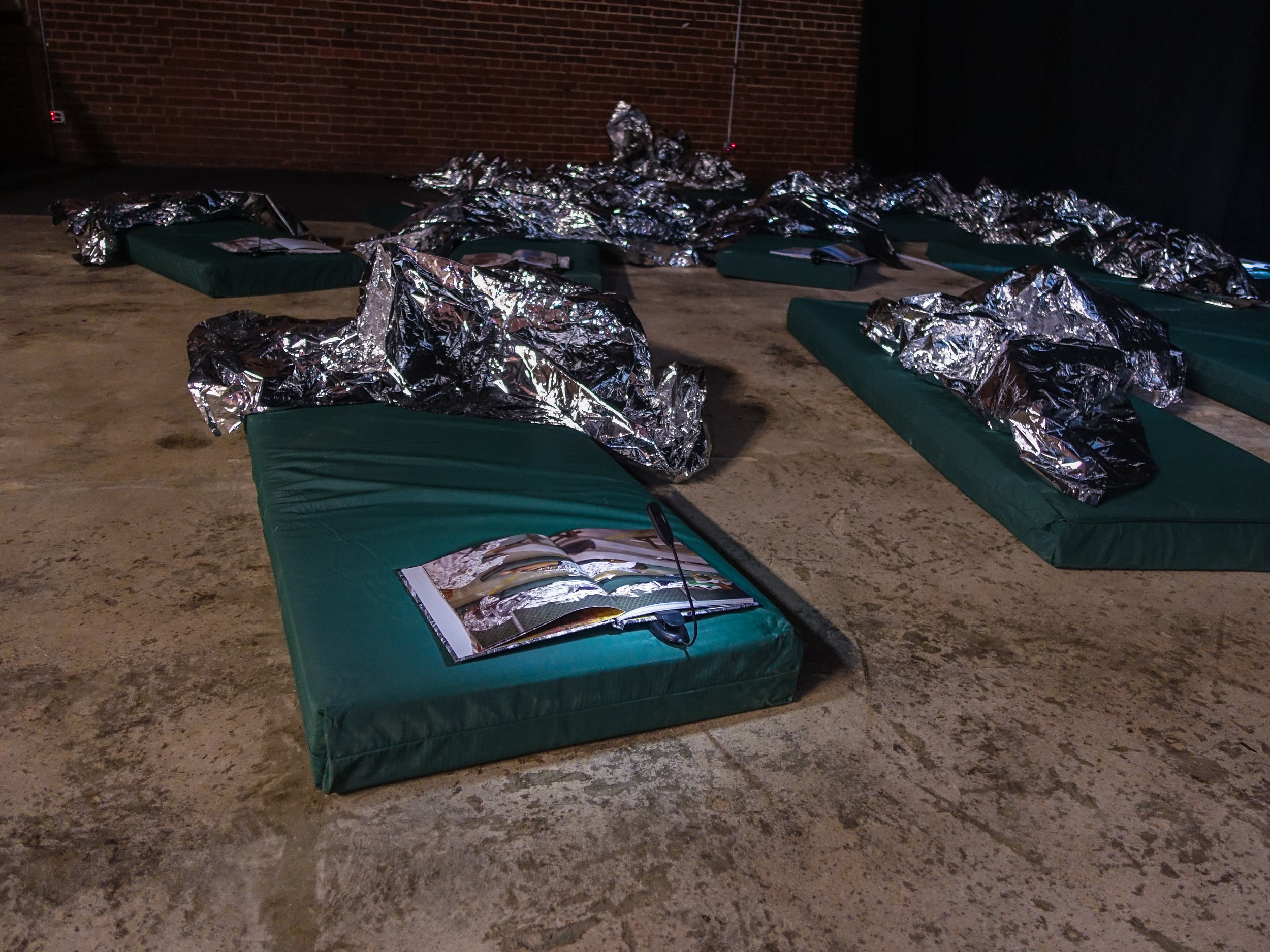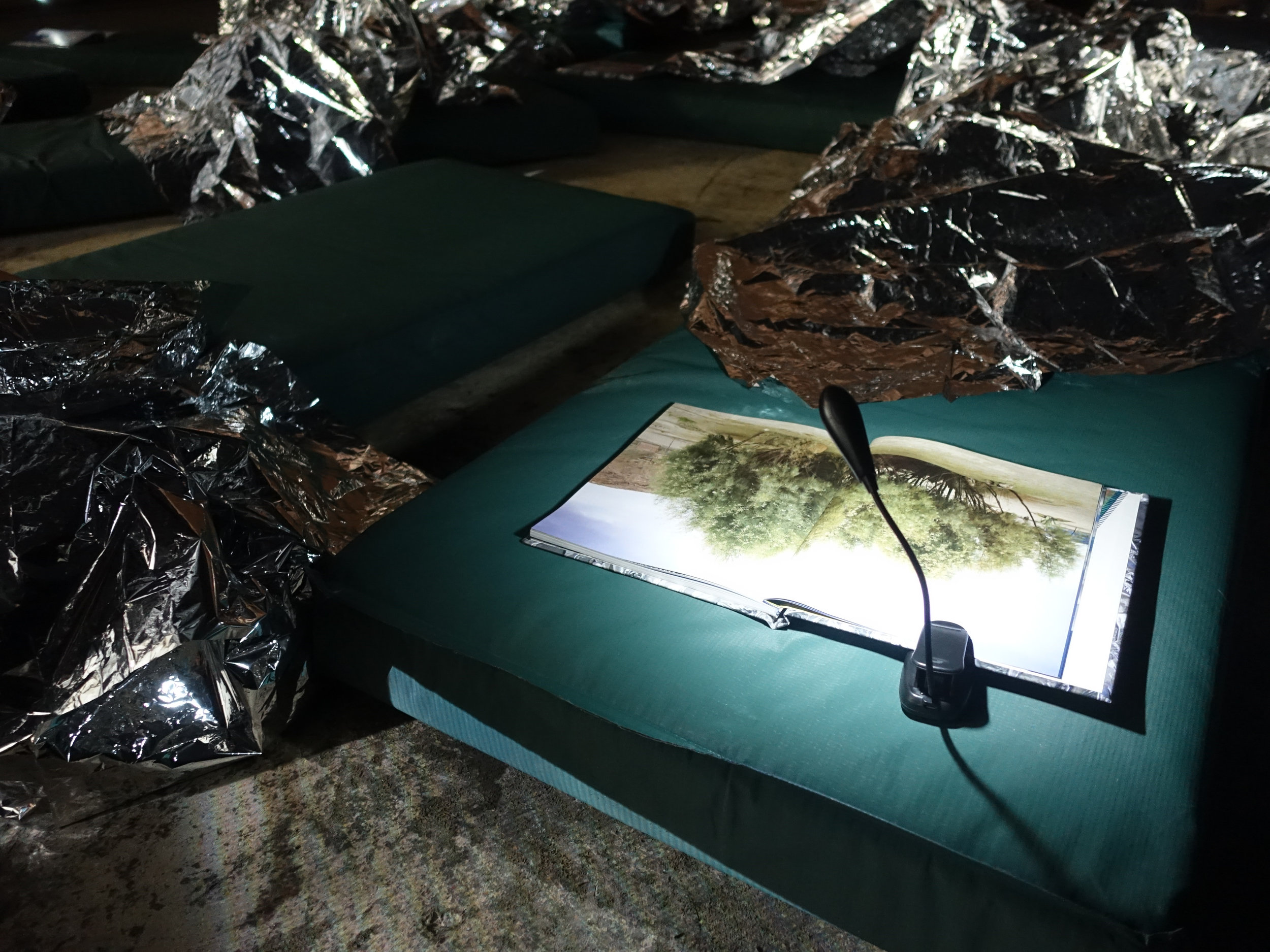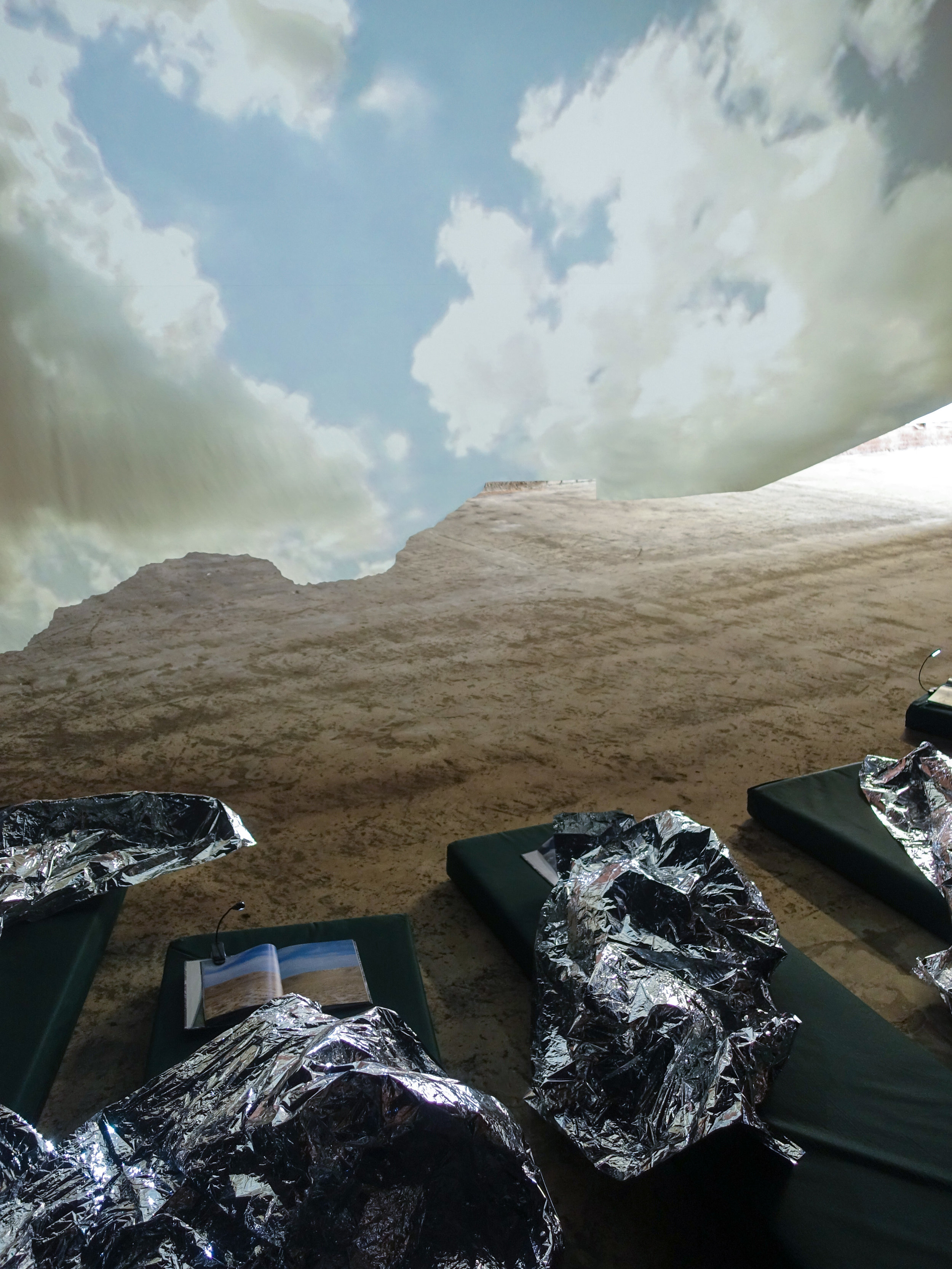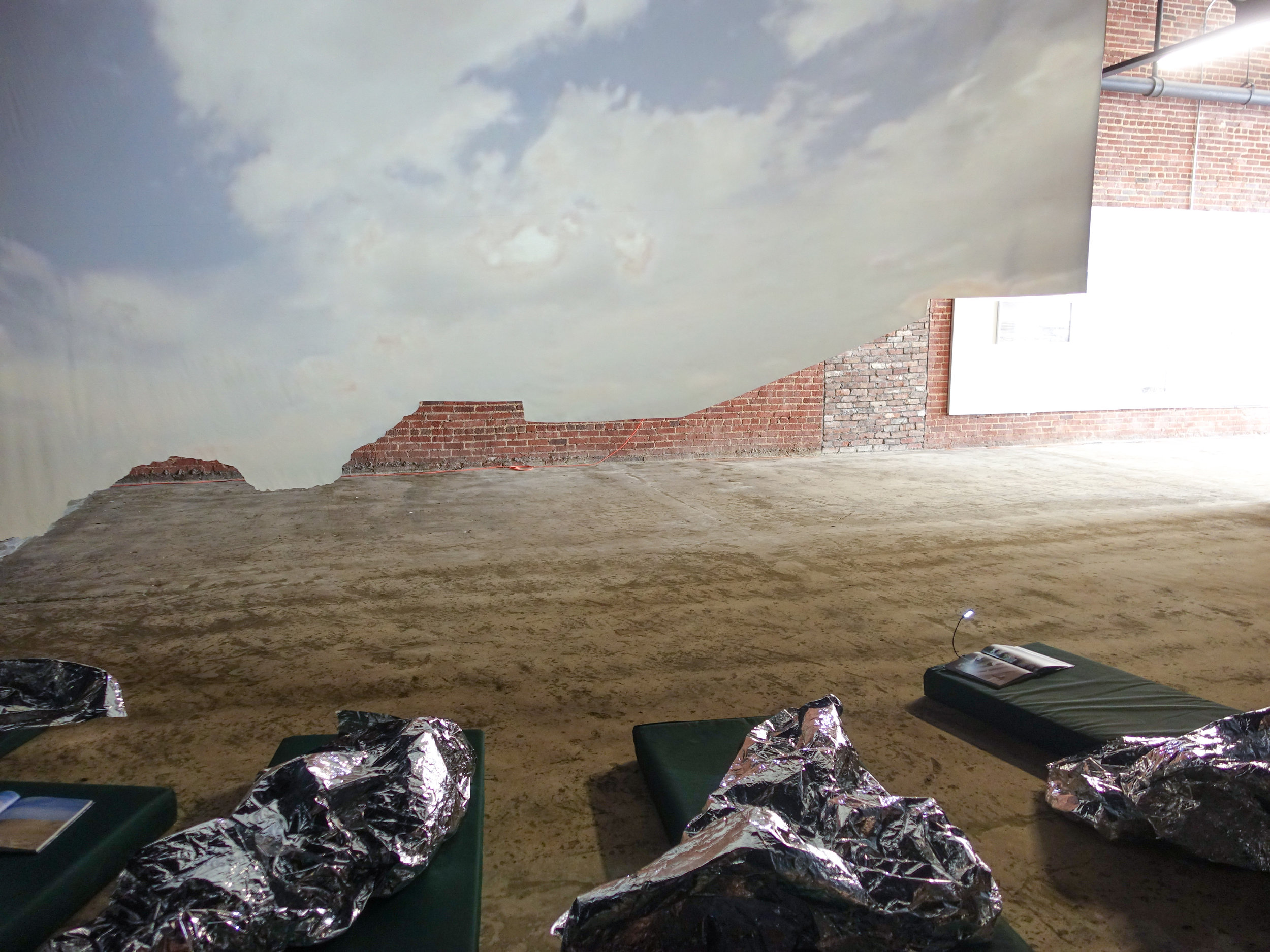FLUCTUATING MERIDIANS
FEBRUARY 22 - MARCH 17
1404 COWART ST, 37408
The work of Erika Harrsch, Andrew O’Brien, Pete Hoffecker Mejia, and Cog•nate Collective (Amy Sanchez Arteaga and Misael Diaz) explore the political, social, and environmental realities resulting from the territorialization of North America. Through the collision of perspectives, from the individual to that of the collective, Fluctuating Meridians presents the relationships, misinformation, and generative possibilities that exist in the evolving border region, its contiguous places, people, and things. A multi-media installation, the 3rd in Stove Works’ 5-exhibition satellite series, invites visitors to witness, participate, and even collaborate as Fluctuating Meridians unfolds.
A meridian is, essentially, a line on the surface of the earth, and visible at a manageable scale on globes and maps. They are continuous lines traveling North to South passing through exact coordinates. These lines are unchanging, they are immutable, and thus provide fixed points to aid in navigation and location. If one knows where there is, one can deduce where here is.
The body also has lines inscribed on and within it. Some are similar to the longitudinal lines assigned to the surface of the earth. They are means of understanding, of parsing out the unknown into more compliant units. These are made obvious in the shifting growth patterns of hair, under the surgeon’s scalpel, and encoded in morphological stereotypes. On the inside, lines follow similar linear and quantifiable form as well as nonlinear even extra-ordinary trajectories. In modes of Eastern thought, a meridian is an energy pathway, streaming through the body affecting well-being in part or in total. These lines actually work to make the body lineless, an interconnected web of vital energies aggregating in the whole physical being. You. and Me.
So Fluctuating Meridians is an examination of lines, those that define, demarcate and divide, blend and enrich. Chattanooga is a vital tangle of these paths of information. These five artists explore separations and connections, unseating viewer’s presumptions so that we may reemerge, and fluctuate ourselves, disentangling the knot.
This exhibition will facilitate the examination of different questions asked across the US:
Who is and who is not American? Why is this question asked and should it be asked?
What cultural characteristics, geographic locations, environmental factors, histories, politics, etc. compose the individual, the group?
What is other? What is an outsider? An insider? And is assimilation a requirement for citizenship, belonging (or inclusion)?
What internal thresholds, affinities, erasures, censorships, and expressions take place in the construction of personal identity?
How do all of these questions manifest and affect the multiple consciousnesses of humyns not included within the narrow-normal?
For many, throughout the United States, are such amorphous borders a way of life, a mentality, and omnipresent psychology?
__
Artist Bios
The work of Erika Harrsch brings policy and people into the shared space of the gallery, relocating an ICE detention center for undocumented migrant youth from there to here. Her installation questions how do there-places exist in the collective imagination and what forces give form to our imaginings. Much like the real people, places, and things that order, wall, are abstractions. Harrsch’s facsimile proffers an environment that is neither real nor fake, a transitional space to witness and become detained; in body, in mind, and in solidarity.
__
Andrew O’Brien’s photographs are wayfinding devices. They are markers, celestial signatures that identify the final resting place of unidentified border-crossers overtaken by the extremes of their journey. Using a sextant, a maritime instrument, O’Brien conflates perspectives; that of the landscape, those traveling through it, gallery visitors, the artist, and the stars.
__
Peter Hoffecker Mejia designs repetitious constructions, cadenced and patternized, utilizing forms that shift as they are encountered. According to Claire Bishop, a prominent art historian, there is never a single perspective. In fact the perspective that art, particularly painting, was produced from antiquity to the present embodied the narrative proclivities of those in power; the European, male, overseer. Hoffecker-Mejia challenges the laminated voice of History and colonization. By Pete’s telling of his story and its mish-mash of experience, the stories of art’s origin are thrown into question and the boundary between what we know and what we don’t become that much more indeterminate.
__
Cognate Collective’s work fixates on the Mexico, United States border. The collaborative team of Amy Sanchez and Misael Diaz’s Cognates fixation agitates this geopolitical line, lifting it off the map and exploring the cartography of the social.


